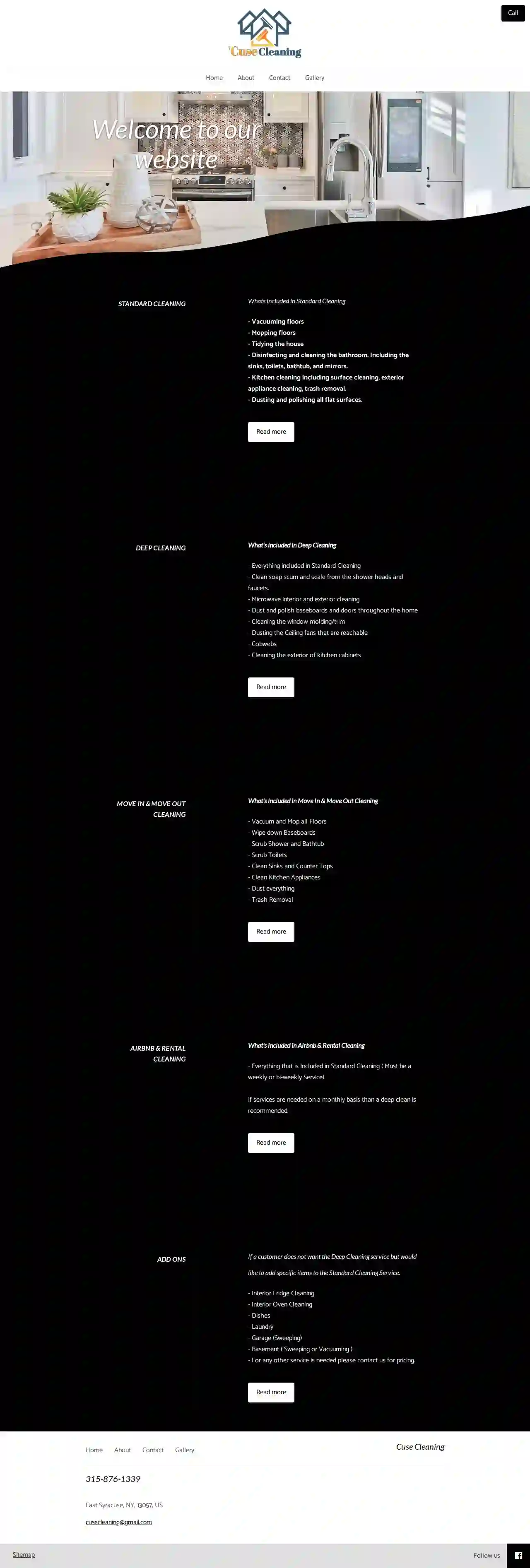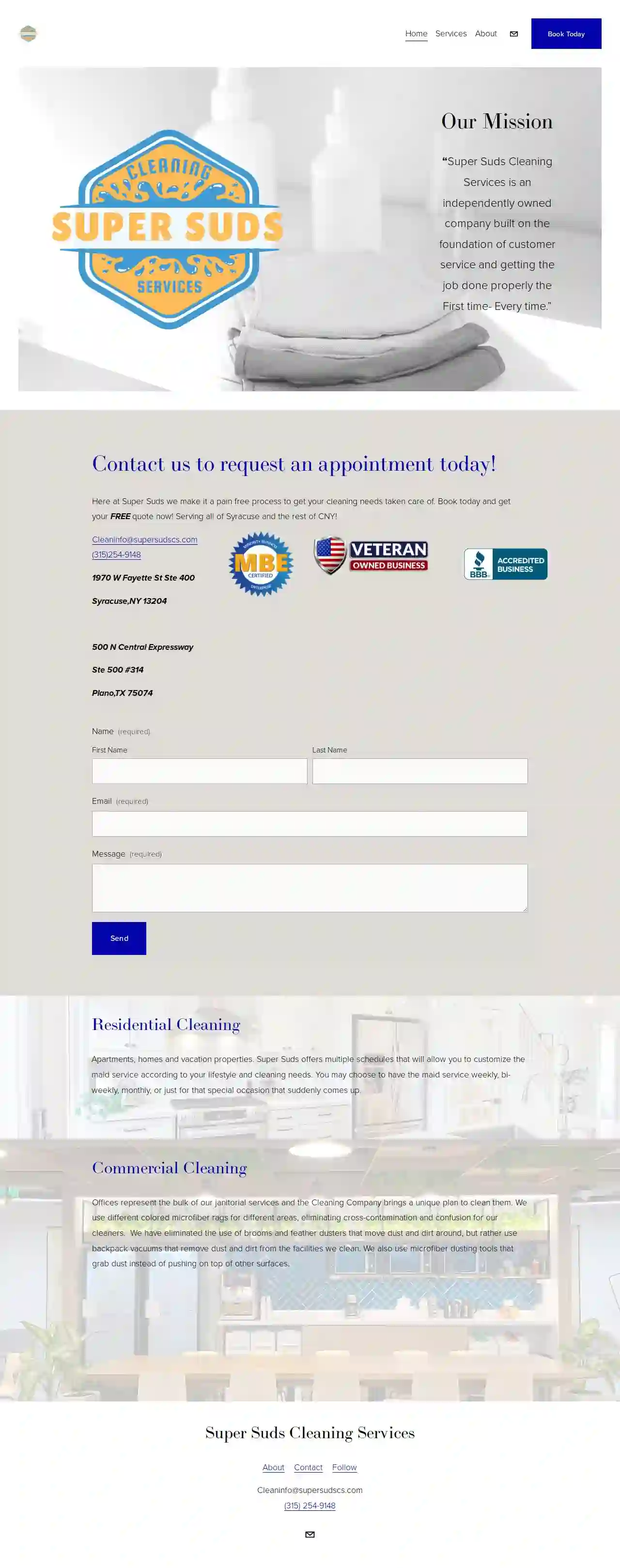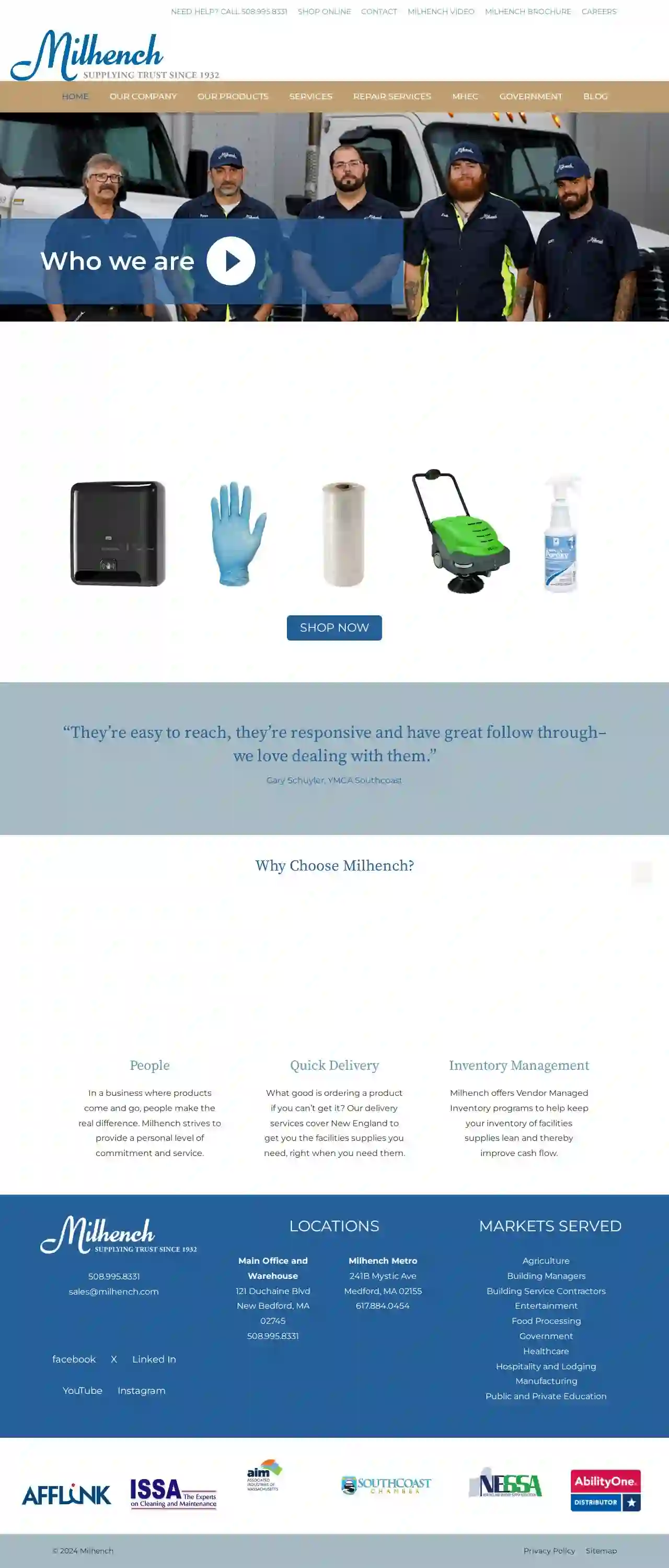Cleaning Services Shirley
Find top Cleaning Companies in Shirley
Receive multiple Housekeeping Services quotes for your project today! Compare profiles, reviews, accreditations, portfolio, etc... and choose the best offer.

Elite Supreme Cleaning
58 reviewsQueens, US- Services
- Why Us?
- Gallery
Get Quote
Cuse Cleaning
528 reviewsSyracuse, US- Services
- Why Us?
- Gallery
Get Quote
Queen City Janitorial
521 reviewsQueens, US- Services
- Why Us?
- Gallery
Get Quote
Accord Building Services
3.829 reviewsQueens, US- Services
- Why Us?
- Gallery
Get Quote
A1 Janitorial Cleaning Service
516 reviewsQueens, US- Services
- Why Us?
- Gallery
Get Quote
Super Suds Cleaning Services
4.218 reviewsSyracuse, US- Services
- Why Us?
- Gallery
Get Quote
Milhench Supply Co
4.36 reviews121 Duchaine Blvd, New Bedford, 02745, USMilhench is a family-run business that has been providing everyday necessities to keep businesses running cleanly and efficiently for over three generations. With a mission to deliver dependability, Milhench offers a personal level of commitment and service, quick delivery, and inventory management programs to help improve cash flow. They serve various markets including Agriculture, Building Managers, Building Service Contractors, Entertainment, Food Processing, Government, Healthcare, Hospitality and Lodging, Manufacturing, Public and Private Education.
- Services
- Why Us?
- Accreditations
- Our Team
- Testimonials
- Gallery
Get Quote
JAN-PRO Cleaning & Disinfecting in Western NY
516 reviewsBuffalo, US- Services
- Why Us?
Get Quote- Fi
Final Clean
3.214 reviewsQueens, US- Services
- Why Us?
Get Quote - SO
SO CLEAN NYC
4.117 reviewsBrooklyn, US- Services
- Why Us?
Get Quote
Over 60,241+ Janitorial Contractors registered
Our janitorial companies operate in Shirley & surroundings!
CleaningMatch has curated and vetted Top Janitorial Services arround Shirley. Find the most reliable pro today.
Frequently Asked Questions About Cleaning Services
- Ventilation: Improve ventilation by opening windows, turning on the exhaust fan, and using a dehumidifier to reduce moisture levels.
- Bleach Solution: Mix one cup of bleach with one gallon of water. Wear gloves and eye protection when handling bleach. Apply the solution to the affected area, let it sit for 10-15 minutes, then scrub with a brush and rinse thoroughly.
- Vinegar Solution: For a milder alternative, mix equal parts water and vinegar. Apply to the moldy area, let it sit for an hour, then scrub and rinse.
- Baking Soda Paste: Make a paste of baking soda and water, apply to the moldy area, let it dry, then scrub and rinse. Baking soda helps remove stains and deodorize.
- Commercial Mold and Mildew Remover: Use a commercial mold and mildew remover according to the product instructions.
- White Vinegar: A versatile cleaner that cuts through grease, removes stains, and deodorizes. Mix equal parts water and vinegar for a general-purpose cleaner.
- Baking Soda: A natural abrasive and deodorizer. Sprinkle baking soda on surfaces, let it sit, then scrub and rinse.
- Lemon Juice: Acts as a natural bleaching agent and disinfectant. Mix lemon juice with water for a cleaning solution or use it directly on stains.
- Castile Soap: A gentle and biodegradable soap made from plant oils. Mix a few drops of castile soap with water for a versatile cleaning solution.
- Essential Oils: Add a few drops of essential oils like tea tree oil or lavender oil to cleaning solutions for a natural fragrance and antibacterial properties.
- Cleaning: Removing dirt, dust, and debris from surfaces using soap or detergent and water. It improves the appearance and removes visible contaminants.
- Sanitizing: Reducing the number of bacteria on surfaces to a safe level. It uses chemical disinfectants or heat to kill or inactivate bacteria.
- Disinfecting: Killing or inactivating most disease-causing microorganisms on surfaces. It uses stronger chemical disinfectants than sanitizing and targets a wider range of pathogens.
How do I remove mold and mildew from my bathroom?
Always test any cleaning solution on a small, inconspicuous area first. After cleaning, take steps to prevent future mold growth by addressing moisture issues, such as fixing leaks and improving ventilation.
What are some eco-friendly cleaning solutions?
Remember to test these solutions on a small, inconspicuous area first to ensure they don't damage delicate surfaces.
What is the difference between cleaning, sanitizing, and disinfecting?
Cleaning is usually the first step, followed by sanitizing or disinfecting depending on the level of hygiene required.
Do I need to provide cleaning supplies for the cleaning service?
If you have specific preferences for cleaning products, such as eco-friendly or hypoallergenic options, communicate those to the cleaning service. They may accommodate your requests or allow you to provide your preferred supplies.
How do I remove mold and mildew from my bathroom?
- Ventilation: Improve ventilation by opening windows, turning on the exhaust fan, and using a dehumidifier to reduce moisture levels.
- Bleach Solution: Mix one cup of bleach with one gallon of water. Wear gloves and eye protection when handling bleach. Apply the solution to the affected area, let it sit for 10-15 minutes, then scrub with a brush and rinse thoroughly.
- Vinegar Solution: For a milder alternative, mix equal parts water and vinegar. Apply to the moldy area, let it sit for an hour, then scrub and rinse.
- Baking Soda Paste: Make a paste of baking soda and water, apply to the moldy area, let it dry, then scrub and rinse. Baking soda helps remove stains and deodorize.
- Commercial Mold and Mildew Remover: Use a commercial mold and mildew remover according to the product instructions.
Always test any cleaning solution on a small, inconspicuous area first. After cleaning, take steps to prevent future mold growth by addressing moisture issues, such as fixing leaks and improving ventilation.
What are some eco-friendly cleaning solutions?
- White Vinegar: A versatile cleaner that cuts through grease, removes stains, and deodorizes. Mix equal parts water and vinegar for a general-purpose cleaner.
- Baking Soda: A natural abrasive and deodorizer. Sprinkle baking soda on surfaces, let it sit, then scrub and rinse.
- Lemon Juice: Acts as a natural bleaching agent and disinfectant. Mix lemon juice with water for a cleaning solution or use it directly on stains.
- Castile Soap: A gentle and biodegradable soap made from plant oils. Mix a few drops of castile soap with water for a versatile cleaning solution.
- Essential Oils: Add a few drops of essential oils like tea tree oil or lavender oil to cleaning solutions for a natural fragrance and antibacterial properties.
Remember to test these solutions on a small, inconspicuous area first to ensure they don't damage delicate surfaces.
What is the difference between cleaning, sanitizing, and disinfecting?
- Cleaning: Removing dirt, dust, and debris from surfaces using soap or detergent and water. It improves the appearance and removes visible contaminants.
- Sanitizing: Reducing the number of bacteria on surfaces to a safe level. It uses chemical disinfectants or heat to kill or inactivate bacteria.
- Disinfecting: Killing or inactivating most disease-causing microorganisms on surfaces. It uses stronger chemical disinfectants than sanitizing and targets a wider range of pathogens.
Cleaning is usually the first step, followed by sanitizing or disinfecting depending on the level of hygiene required.
Do I need to provide cleaning supplies for the cleaning service?
If you have specific preferences for cleaning products, such as eco-friendly or hypoallergenic options, communicate those to the cleaning service. They may accommodate your requests or allow you to provide your preferred supplies.